Gross! Here Are the Best Ways to Remove Mildew for Good
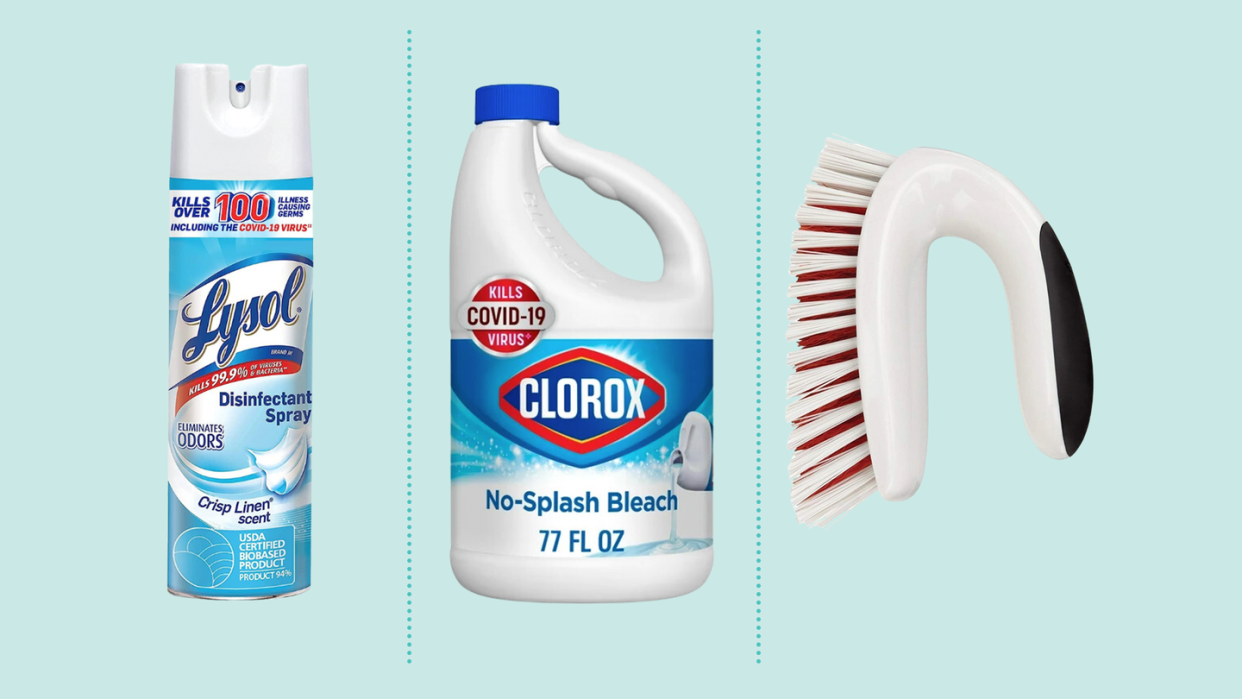
"Hearst Magazines and Yahoo may earn commission or revenue on some items through these links."
[table-of-contents] stripped
Mildew thrives in moist, damp spaces — think dark spots on your clothes, powdery clusters on wood furniture or black gunk in the corners of your shower. The disgusting fungus may be hiding in neglected areas of your home, such as the garage, basement or under the kitchen sink. You can spot mildew during early stages as white or gray powdery dots, but the fungus can also turn yellow, brown or dark gray.
"Mildew is not only unsightly, but can be irritating, especially to family members with allergies or other respiratory sensitivities," says Carolyn Forté, executive director of the Good Housekeeping Institute Home Care & Cleaning Lab. "If it's not addressed promptly, it can quickly spread to become a more dangerous and serious situation." It's often the first clue that something needs to be handled, like fixing a leak or controlling your home's humidity level.
Luckily, we've rounded up expert advice for mildew removal — whether you've got a situation growing on walls, upholstery, carpets, clothes or more! Follow our step-by-step instructions to stop mildew in its tracks. Plus, keep scrolling for prevention tips, the difference between mildew and mold growth and a few of our favorite cleaning products.
Remove Mildew From Upholstery
Upholstered furniture, like a mattress or sofa, that's been damaged by water or may have mildew growing inside should be discarded. If you're dealing with a small mildew stain, here is the best way to tackle it:
Vacuum the entire surface.
For remaining stains, sponge the surface with a cloth moistened in equal parts rubbing alcohol and warm water. We suggest doing a spot-test first to make sure the fabric won't damage. (Note: If your cushions are removable, remove the cover before cleaning. But, look out for any mildew that may have spread to the cushion.)
Wipe the upholstery with a water-dampened sponge.
Fan dry the upholstery for several hours; sprinkle on and brush in baking soda to help remove odors.
Spray the surface with a disinfectant, like Lysol, to kill spores that can linger.
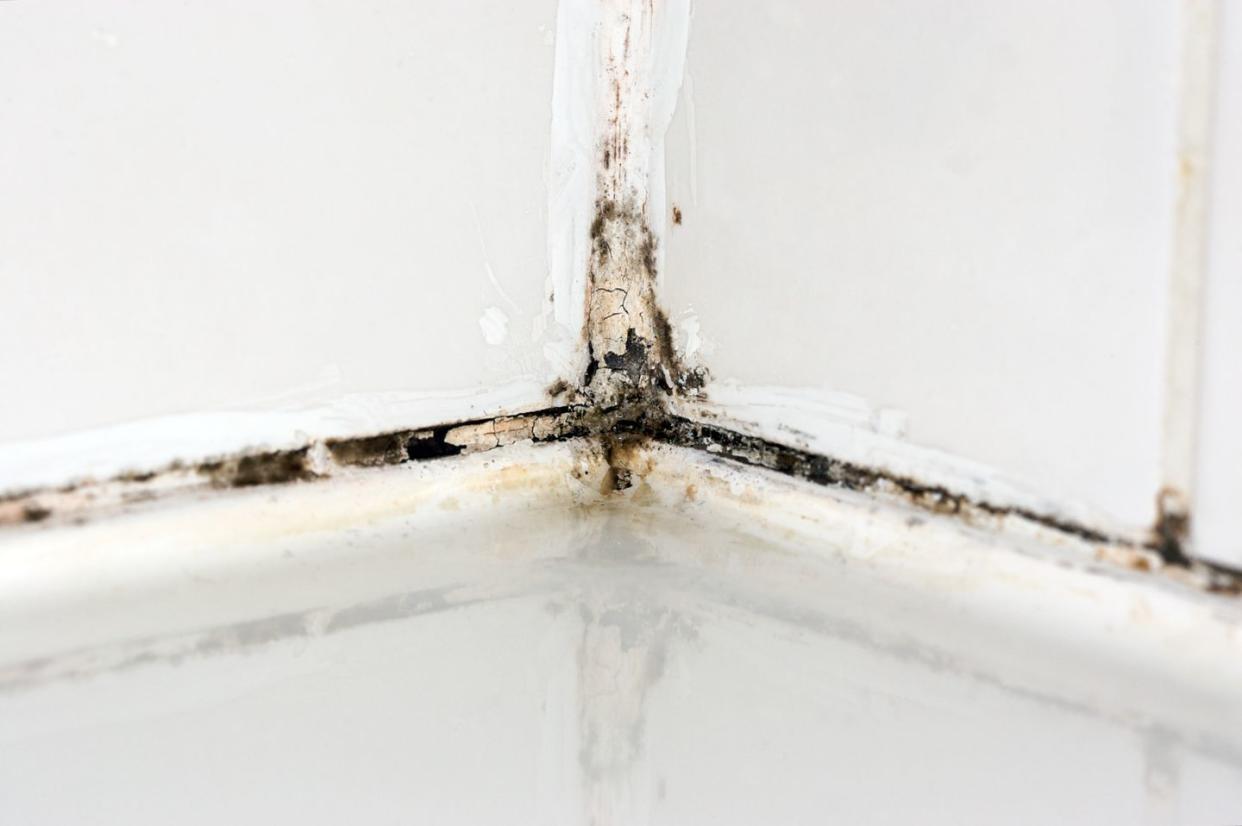
Remove Mildew From Walls
Mildew tends to linger on walls, tiles and grout, especially in the bathroom where ventilation is poor. It's important to stop growth during early stages. Here's how:
Mix ¾ cup bleach with one gallon of water (equal to 3 tablespoons bleach to one quart water for smaller areas).
Apply mixture with a soft scrub brush for walls or a stiff brush for grout (don't forget to wear gloves).
Let the solution penetrate for 15 minutes before rinsing with water.
Wipe dry. Then, use a fan to dry the surface thoroughly.
Expert Tip: When cleaning mildew, always wear a face covering, long rubber gloves and protective eyewear.
Remove Mildew From Clothing
You may notice a mildew scent or mold spores on clothing or linens that have been stored in a moist attic or basement. Luckily, if you follow these steps, you may not have to throw away mildewed clothing.
Use a stiff brush to remove mold spores (we suggest doing so outdoors).
Sun dry the item for about three hours.
Check the care labels and if safe, use chlorine bleach or pre-soak colored fabrics for 30 minutes in liquid non-chlorine bleach. For mild stains, you can instead soak the area in equal parts white vinegar and water.
Rinse and machine wash as usual.
Remove Mildew From Shower Curtains
If you step into the bathtub and notice that your shower curtain is dotted with mildew, take action quick. Quick prevention tip: Spread out your shower curtain or lining to help it dry.
Wash plastic liners or plastic shower curtains in the washing machine on a gentle cycle with the regular amount of detergent — you can also add bleach. Add two to three bath towels for extra cleaning agitation. (If your shower curtain is fabric or decorative, wash according to the care instructions).
Hang curtain to dry or put it the dryer on low for a few minutes to remove excess moisture. Never leave a plastic liner or curtain in the dryer unattended.
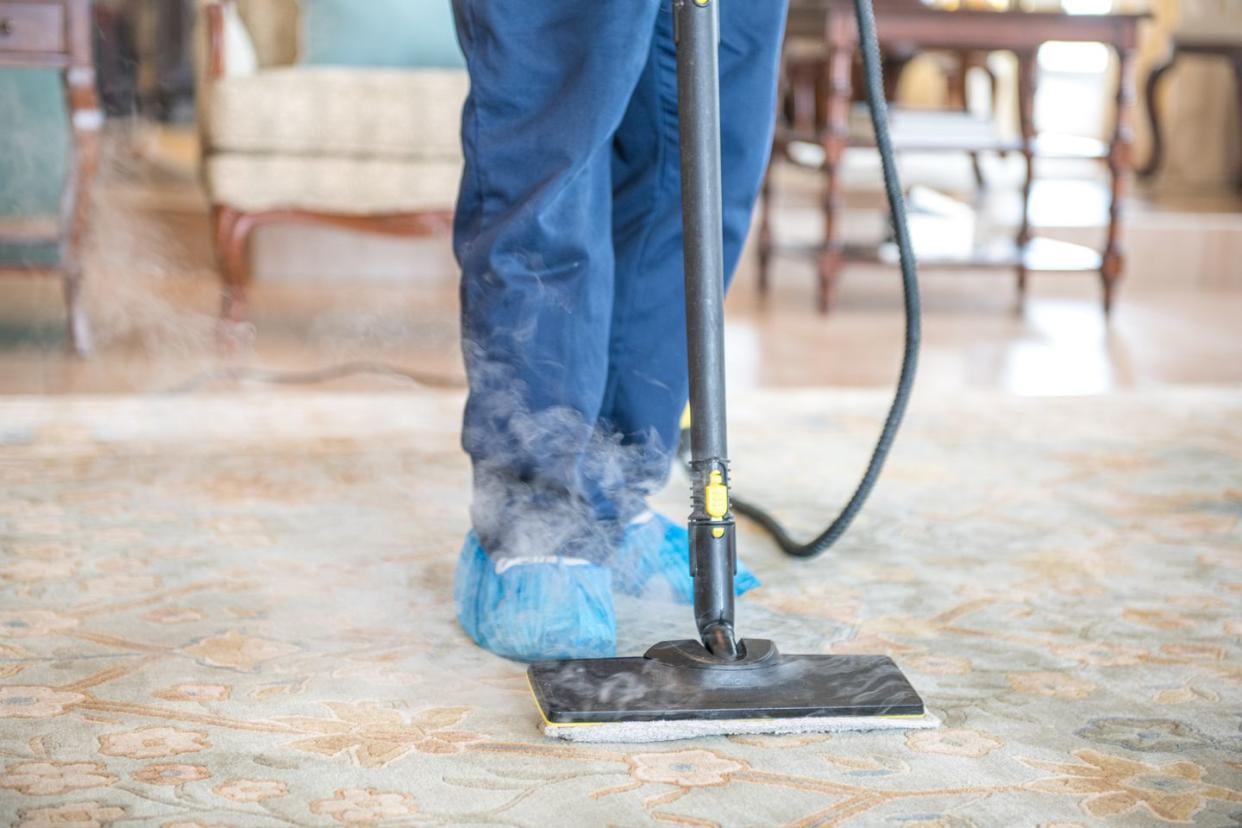
Remove Mildew From Carpets
Whether you've experienced a little flooding or a room is overly damp or humid, mildew can grow on carpets. You may notice a musty smell or greenish stains. Carpets and rugs that are completely saturated by dirty flood water, should be discarded.
Make sure the space is dry. Use a wet-dry vacuum to remove water. If possible, hang rugs or carpets outside in the sun to dry. If it's not possible, open windows and use fans. to air out the space. Try to pick up wet sections if you can to make sure the padding and flooring underneath dry thoroughly.
For small stains, use a carpet stain remover. Or, clean and rinse the carpet with a steam cleaner for larger stains.
For lingering odors, spray a mixture of one part vinegar and two parts warm water onto the carpet. Allow it to sit overnight. Sprinkle the area with baking soda, and vacuum it up after a few minutes. You may also spray the carpet afterwards with Lysol disinfectant spray, according to label directions to sanitize the surface.
Remove Mildew on Wood Surfaces
When exposed to moisture, mildew can grow on wood cabinets, paneling or furniture in the form of white powdery spots.
Vacuum loose spores with the soft brush attachment.
Clean small areas using a well-wrung cloth dipped in a few squirts of dishwasher detergent mixed with a gallon of water.
Rinse with a clean, water-dampened cloth and dry immediately with a fan. Be careful, not to oversaturate the wood as it could warp or damage the finish.
Apply a thin coat of Good Housekeeping Seal holder Weiman Furniture Polish to restore the shine and protect the finish.
Expert tip: After vacuuming mildew spores, toss the filter and bag to prevent spores from escaping into the air next time you vacuum.
What are the best products for cleaning mildew?
Disinfectant Spray
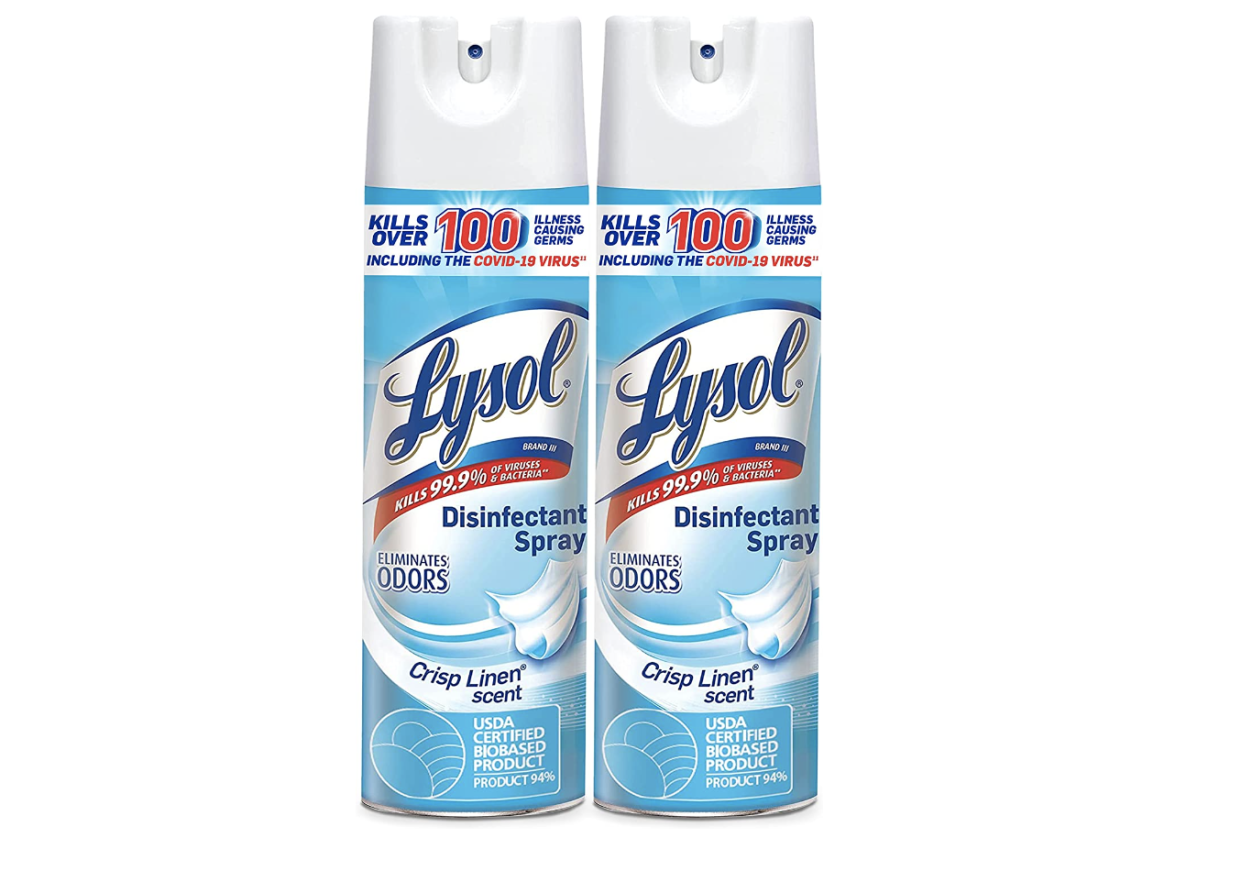
Disinfectant Spray
amazon.com
$11.44
LysolScrub Brush
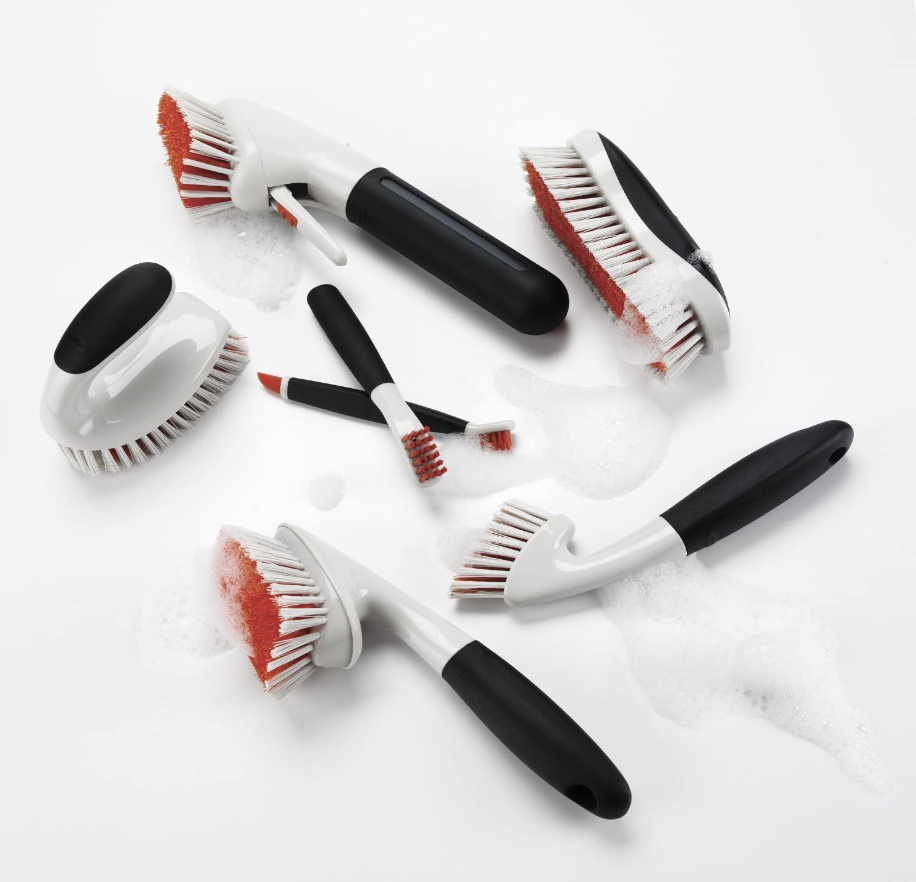
Scrub Brush
amazon.com
$9.99
OXOSplash-Less Bleach
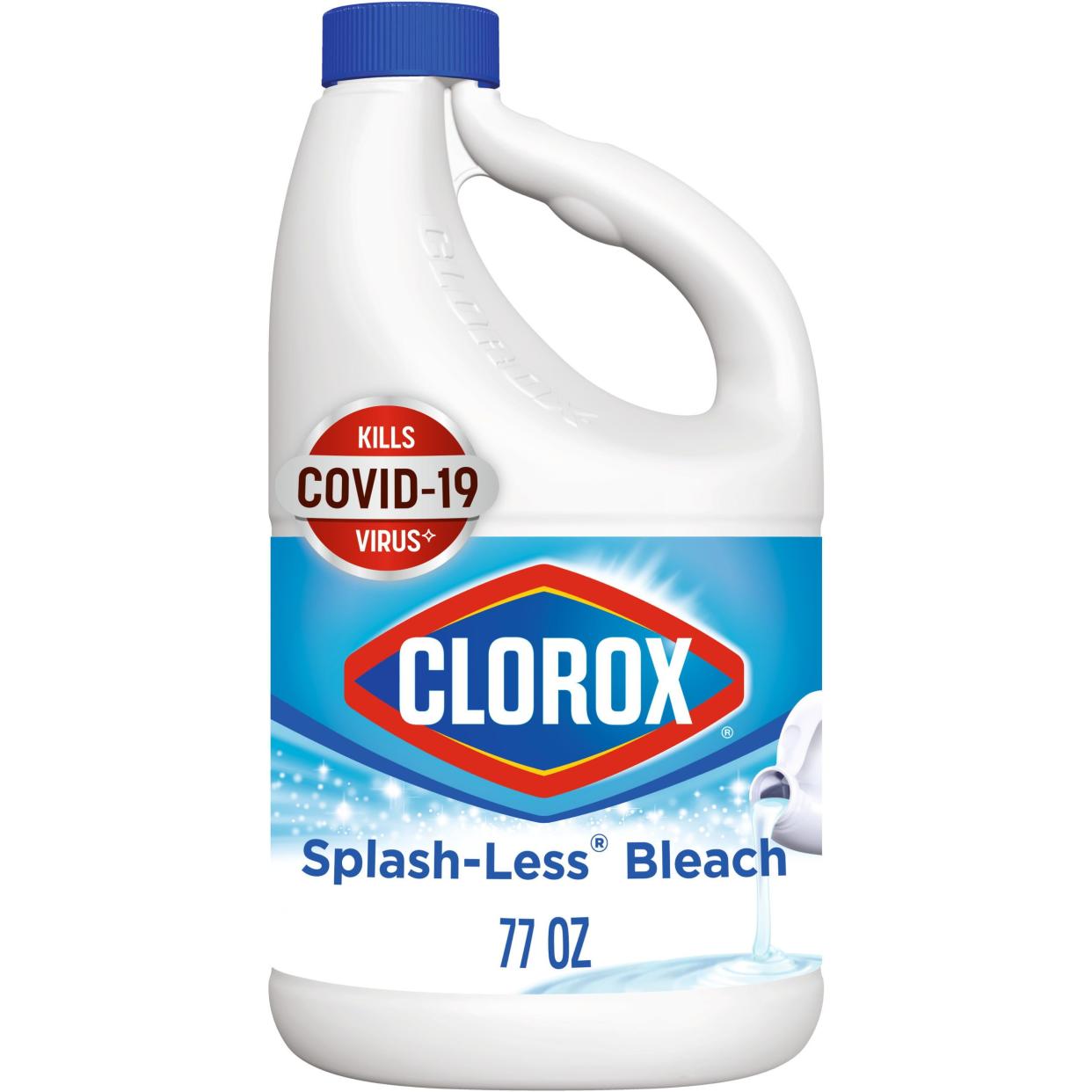
Splash-Less Bleach
walmart.com
$3.97
CloroxWhat's the difference between mold and mildew?
Mildew, a type of mold, is easier to remove and tends to less dangerous than other types of mold (think black mold). Although, both microscopic fungi can cause health problems and damage to your home. Mildew is typically more visible during early stages and pops up as white or gray powdery dots. It may turn yellow or brown, but generally remains pretty flat. Mold appears darker, often in shades of red, green or black and can have a fuzzy texture. While the mold and mildew can be treated in similar ways, read our tips for removing stubborn mold spots if you suspect a mold outbreak.
How can I prevent mildew?
Use a top-tested dehumidifier to keep damp areas, like the basement or bathroom, dry and maintain indoor humidity levels.
Open the bathroom door during and after showering to allow moisture out.
Dry or squeegee shower walls, floor and tub after showering to remove excess moisture and help surfaces dry faster.
If you have bathroom tiles, seal grout lines every year to waterproof the surface.
Avoid storing linens, books or furniture in damp basements or attics.
Don't leave damp towels or gym clothes in bags or closets.
Track down and fix leaks as soon as possible.
..
You Might Also Like
